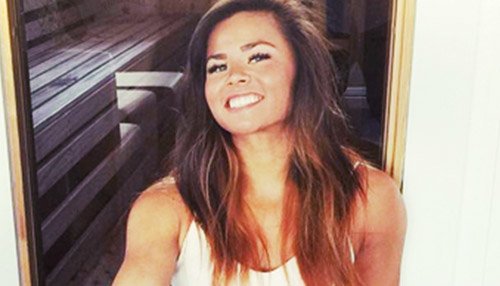
Sophie Arvebrink's Max-Strength Deadlift Workout
If you dream of building a back that can break Instagram, deadlifts need to be a major part of the equation. Follow athlete Sophie Arvebrink's plan for serious strength!
Heavy, thorough deadlift workouts can have incredible effects on the strength and overall shape of your physique. But to see their benefits, you have to do the move right—both in terms of technique and programming. My deadlift progression will help you earn a well-balanced, athletic body without any weak links!
Even though deadlifts train pretty much the entire body, I normally use the lift as a heavy back exercise in the beginning of a full-fledged back routine like I described in "Lat Attack: My Best Back Workout." However, when I'm in the mood and feeling strong, I'll dedicate a session exclusively to deadlifting.
If you do regular bodybuilding splits and routines, try an exclusive hour of heavy deadlifts! It's a challenge that will show you exactly what still needs to be strengthened.
Tie Everything Together
Learning to deadlift is all about maximizing pressure in certain places, and keeping it relatively low in others. You red-line it in your abdomen and lats so that you don't put too much pressure on your lower back, which—this isn't news to anybody, right?—is the first thing that will get tweaked when your deadlift technique fails.
I don't want to find out during my deadlift that my core isn't strong enough. I know some people consider heavy deads to be core training, but for me, it's a test of my other core training. It's also a test of my lat strength—and luckily, that's a test I'm up for!
Learn to lock down your core and middle back and you'll find that it's a lot easier to hold that crucial neutral position during the whole lift. Sure, most people's form will slip a little during a max-effort lift, but if you've been building up lots and lots (and lots) of volume with perfect form at lower weights, the foundation of strength you've been building will be sufficient to carry you safely to the top!
A Weighty Conversation
My number one rule when it comes to deadlifting is not to get too obsessed with lifting heavy in the beginning. You have to earn your numbers! Never try a lift you aren't prepared for. This isn't powerlifting here, and there's nothing to be gained from a failed rep. In fact, I only attempt a new max every once in a while. The rest of the time, I'm nailing reps with weights I know I can control. Sure, a little struggle is inevitable, but don't make it the norm.
When you do heavy deadlifts, it's also crucial that you warm up properly. I usually do 5 sets on lower weight and higher reps before I go heavy. As I mentioned, deadlifts involve the entire body, and it takes time to wake your body up and get it ready for this type of challenge.
Between sets during the warm-up period, stretch your glutes, hips, and hamstrings. You don't want to strain any of your muscles during the lift, and you need plenty of range of motion in these particular muscles to get into position.
What about belts and straps, you ask? Sure, you can lift more if you use these tools. Straps will help you if your grip is weak, and a belt will help you increase abdomnial pressure and keep your back from getting hunched. Personally, I like to lift without belt and straps because I don't want any weak links in my body. Like I said, I'm all about earning my numbers!
Six Big-Back Rules
-
I can't tell you which stance to use: narrow, wide, or somewhere comfortable in between. Try them all out.
-
I prefer mixed grip, since my hands are small, and I get a better grip that way. If you use mixed grip, make sure you switch hands from time to time.
-
Inhale right before you start and get into lifting position. Inhale, lock in your back position, and build that abdomnial pressure. Feel the tension in your hands, lats, and hamstrings. You shouldn't be comfortable at the bottom of the lift!
-
Pull the bar close to your body, and then push through your knees. This isn't just a back lift; use your legs and your back at the same time so that the lift is syncronized.
-
Don't overextend your lower back in the top of the deadlift. Lock that butt!
-
Other people will say differently, but in my book, heavy deadlifts are all about the concentric phase—the way up. Don't hold back or go slow in the eccentric phase. If your gym allows you to drop the weights, go ahead and do it, or just do a lightly controlled drop where your hands keep it from bouncing.

